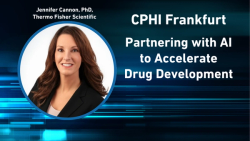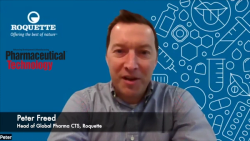
OR WAIT null SECS
- About Us
- Advertise
- Contact Us
- Editorial Info
- Editorial Advisory Board
- Do Not Sell My Personal Information
- Privacy Policy
- Terms and Conditions
© 2025 MJH Life Sciences™ , Pharmaceutical Technology - Pharma News and Development Insights. All rights reserved.
Construction Approach of a Phosgenation Laboratory and GMP Plant at Valsynthese
The author describes the construction approach of a phosgene R&D laboratory and a medium-scale commercial phosgenation plant at Valsynthese.
Phosgene is a powerful reagent allowing the straightforward synthesis of key intermediates such as chloroformates, acid chlorides, and carbamoyl chlorides. Phosgenation permits the selective and efficient production of isocyanates, N-carboxy anhydrides (NCAs), carbonates, carbamides, and ureas (1–3). A direct reaction with phosgene is often shorter and more cost-effective than alternative methods or workarounds, thereby reducing waste and energy consumption. In contrast to other carbonylating agents such as di- and triphosgene, traces of phosgene in the API is not an issue. Because of its high volatility and fast rate of hydrolysis, excess phosgene can be easily removed or destroyed at the end of a reaction.
In this article, the author describes the construction approach of a phosgene R&D laboratory and a medium-scale commercial phosgenation plant at Valsynthese. The hazardous properties of phosgene are well known. It is a highly toxic gas with LC50 values in the low parts per million (ppm) range. Doses of 150 ppm-min can lead to severe and even fatal lung edema. A few minutes of exposure to 100 ppm phosgene (e.g., during an incident) can be fatal; and so can be an eight-hour exposure to just 1 ppm of the gas (e.g., while working with a slowly leaking equipment), which is only slightly above the odor threshold of 0.4 ppm. The odor of phosgene provides no reliable warning to the operator working with it. Moreover, the symptoms of an intoxication with phosgene can occur up to 48 hours past the intoxication.
Nonetheless, with appropriate measures, phosgene can be handled safely in the laboratory as well as in large-scale production. It is mandatory to handle phosgene in “closed” equipment and treat any vapors escaping from this equipment, for example, by using an efficient scrubber. Electrochemical sensors allow permanent monitoring of the atmosphere around the equipment and in the workplace, thus providing an early warning in the case of leaks or incidents.
Phosgene lab
The first major milestone was the introduction of phosgenation as a new technology in the development labs. Following initial risk analyses, the phosgene lab was designed to meet the highest safety standards. Industry best practice suggests using dedicated, preferably enclosed areas when handling phosgene in the lab. Thus, within an existing large-space laboratory, a dedicated phosgene cabin with two fume hoods was installed. This cabin is equipped with an air-lock system and has a permanently controlled slight under pressure. The modern fume hoods are equipped with an alarm function to constantly monitor their performance.
Phosgenations are carried out in a closed system, namely in a 1-L jacketed glass reactor located in the first fume hood; phosgene is supplied from gas cylinders, containing up to 1.2 kg of phosgene. The reactor exhaust air is treated in a scrubber located in the second fume hood. The atmosphere in the fume hood, in the cabin, and in the exhaust air from the fume hoods is permanently monitored with a set of phosgene detectors. If threshold limits are exceeded, an acoustic and visual alarm is triggered; additionally, the potentially contaminated exhaust air from the fume hoods is treated in a secondary safety scrubber, also located in the containment.
The alarm thresholds for the sensors were set at 0.1 ppm, which corresponds to the MAK value (eight-hour occupational exposure limit [OEL] in Switzerland). Such a low threshold allows the early detection of even small leaks in the system, while at the same time, ensures that the reactor, tubings, and other parts of the installation are fitted tightly.
A critical operation is taking samples from a running phosgenation. This step normally requires interruption of the process and removal of unreacted phosgene, before retrieving an aliquot. Currently, commercial and custom-made equipment are tested to allow sampling during phosgenations in a closed system.
The phosgenations are carried out by well-trained (safety trainings of the laboratory personnel are carried out at least annually), experienced laboratory personnel. During phosgenations, a second person is always present for safety reasons. In addition, all other personnel working in adjacent areas receives an awareness training on how to respond in the case of a phosgene emergency. Written procedures were established and trained on how to deal with incidents.
In this phosgene lab, all kinds of phosgenation processes from -20 °C to +180 °C at atmospheric pressure can be performed. The expertise in handling hazardous chemistry enables Valsynthese to apply phosgenation in the synthesis of isocyanates and various other key intermediates.
Phosgenation plant
The phosgenation plant was constructed as a dedicated containment, which forms an annex to the existing multipurpose plant. The size of the phosgenation plant is designed in a way that the subsequent work-up fits to the existing 4000-L multipurpose reactors. Phosgene is generated continuously from carbon monoxide and chlorine on a carbon catalyst bed at 10–40 kg/h. The phosgene generator was designed and constructed with external engineering support. Phosgene is transferred directly from the generator to a 4000-L reactor for the synthesis of various key intermediates. Constant phosgene monitoring, scrubbers, ventilation, secondary scrubbers, and an ammonia sprinkling system are designed to the highest safety standards. The storage and supply of the highly toxic carbon monoxide and chlorine gasses were designed accordingly. The separate containment allows easy monitoring of the production area and acts as a second barrier to the environment.
During phosgenations, operators are working from a separate control room and don’t need/are not permitted to enter the containment. Besides the normal process controls, video cameras allow a visual control of the installations and the reaction mixtures.
The processes are designed in such a way that the phosgene supplied from the generator is consumed quickly in the reactor. Thus, accumulation of phosgene is minimized, and the total hold-up amount of phosgene present in the system at a given time is in the range of a few kilograms only.
A special sampling loop was designed, that allows to take aliquots of the reaction mixture even during phosgenations. The samples are taken in a glove box that can be accessed from the outside of the containment. Before being sent to the quality-control department, samples are freed of phosgene and tested to confirm the latter.
During the operation qualification, a standard tetralkyl urea was made to confirm the performance of the phosgene generator and the quality of the phosgene produced. Soon after operation qualification, the first commercial products were made in the new phosgenation plant and supplied to customers. The performance of the phosgenation plant and the quality of the products fully met the expectations of Valsynthese and its customers.
Summary
Phosgene chemistry opens a broad pallet of chemistries that can be applied in the development of new chemical entities. Valsynthese has built a GMP phosgenation plant to support the use of phosgenation in first development batches up to commercial production.
References
1. W. Schneider, W. Diller, “Phosgene” in Ullmann’s Encyclopedia of Industrial Chemistry, (Wiley 2000).
2. K. L. Dunlap, “Phosgene” in Kirk-Othmer Encyclopedia of Chemical Technology (Wiley, 2010).
3. L. Cotarca, H. Eckert, Phosgenatios-A Handbook (Wiley, 2005).



